Struggling to Speak After a Stroke? Here's How Speech Therapy Can Help
![]() Medically reviewed and edited by: Katya Dufford, SLP-CCC
Medically reviewed and edited by: Katya Dufford, SLP-CCC
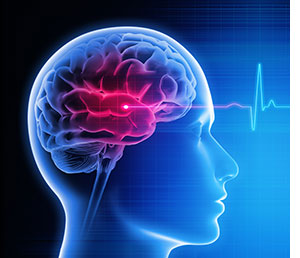
A stroke, whether caused by a blood clot in an ischemic stroke or bleeding in a hemorrhagic stroke, can have a profound impact on communication. The sudden loss of blood supply to areas of the brain that control speech and language often results in communication challenges, including slurred speech, aphasia, or apraxia of speech. These are among the most common symptoms reported by stroke survivors, and they can severely affect daily activities, social interactions, and overall emotional well-being.
Understanding Speech Impairments After Stroke
The Impact of Brain Damage on Communication
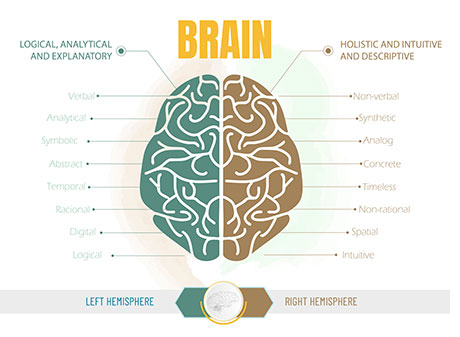 The left hemisphere of the brain is home to the language center, which is responsible for how we process and use language. When a stroke occurs in the left hemisphere of the brain, it often disrupts the language center, leading to various types of aphasia. These may include expressive aphasia and receptive aphasia with varying levels of type and severity. Damage to brain cells in areas controlling speech movement can also result in a motor speech disorder, such as apraxia of speech or dysarthria—conditions that cause difficulty with muscle movements, muscle control, and speed of speech.
The left hemisphere of the brain is home to the language center, which is responsible for how we process and use language. When a stroke occurs in the left hemisphere of the brain, it often disrupts the language center, leading to various types of aphasia. These may include expressive aphasia and receptive aphasia with varying levels of type and severity. Damage to brain cells in areas controlling speech movement can also result in a motor speech disorder, such as apraxia of speech or dysarthria—conditions that cause difficulty with muscle movements, muscle control, and speed of speech.
The Role of Speech Therapy in Stroke Recovery
Individualized Treatment Plans and the Rehabilitation Process
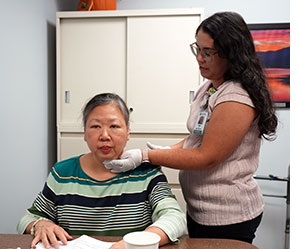 The role of speech therapy is central to the rehabilitation process. A licensed speech pathologist begins with a comprehensive communication assessment, including communication screening, formal communication assessment, and a review of the patient's level of communication and language skills. This initial assessment helps guide an individualized treatment plan tailored to the type of brain injury, the extent of brain tissue damage, and the patient’s specific communication difficulties.
The role of speech therapy is central to the rehabilitation process. A licensed speech pathologist begins with a comprehensive communication assessment, including communication screening, formal communication assessment, and a review of the patient's level of communication and language skills. This initial assessment helps guide an individualized treatment plan tailored to the type of brain injury, the extent of brain tissue damage, and the patient’s specific communication difficulties.
Effective Speech Therapy Exercises and Techniques
Articulation and Therapeutic Exercises
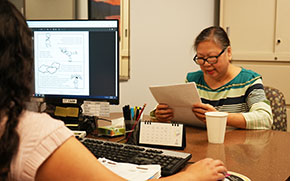 Articulation drill exercises, such as tongue twister activities, and compensatory strategies are used to rebuild accuracy of speech movements for patients experiencing dysarthria, known commonly as slurred speech. Exercises and therapeutic activities for dysarthria are designed to target articulatory movements in the context of speech in order to improve intelligibility.
Articulation drill exercises, such as tongue twister activities, and compensatory strategies are used to rebuild accuracy of speech movements for patients experiencing dysarthria, known commonly as slurred speech. Exercises and therapeutic activities for dysarthria are designed to target articulatory movements in the context of speech in order to improve intelligibility.
Cognitive and Language-Based Activities
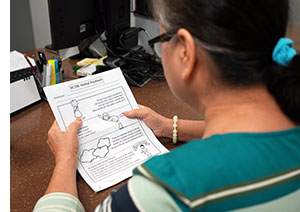 For individuals with cognitive linguistic disorders, therapy often includes tasks that focus on rebuilding language abilities, cognitive abilities, and communication strategies. Patients might practice using memory strategies, language strategies for word retrieval, communication aids, or engage in communication interventions during everyday activities.
For individuals with cognitive linguistic disorders, therapy often includes tasks that focus on rebuilding language abilities, cognitive abilities, and communication strategies. Patients might practice using memory strategies, language strategies for word retrieval, communication aids, or engage in communication interventions during everyday activities.Interactive tasks such as crossword puzzles, brain games, and visual processing activities can stimulate the brain and aid recovery, especially when used on a regular basis. These exercises enhance cognitive functions tied to memory, sequencing, and reasoning—all essential components of effective communication.
Addressing Swallowing and Aspiration Risk
Some stroke survivors experience oropharyngeal dysphagia, a condition that disrupts the normal swallowing process. Survivors with dysphagia face a higher risk of aspiration, which can lead to aspiration pneumonia—a serious complication that requires urgent intervention. 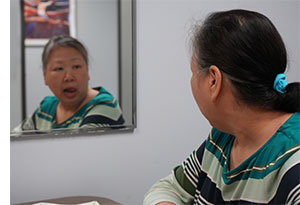 Speech-language pathologists are uniquely qualified to address this issue by creating a swallow exercise program tailored to the patient’s needs, which may include exercises such as the effortful swallow and the supraglottic swallow, both of which help protect the airway during meals. Incorporating these techniques into the rehabilitation plan can significantly reduce aspiration risk and support safer daily life routines. Speech pathologists may also conduct various imaging exams, such as a modified barium swallow study, to further assess swallow function following a stroke.
Speech-language pathologists are uniquely qualified to address this issue by creating a swallow exercise program tailored to the patient’s needs, which may include exercises such as the effortful swallow and the supraglottic swallow, both of which help protect the airway during meals. Incorporating these techniques into the rehabilitation plan can significantly reduce aspiration risk and support safer daily life routines. Speech pathologists may also conduct various imaging exams, such as a modified barium swallow study, to further assess swallow function following a stroke.
The Essential Role of Caregivers and Communication Partners
Creating a Supportive Communication Environment
 Family members and caregivers play an essential role in the recovery process by fostering a positive communication environment. They can assist with practicing speech therapy exercises, reinforcing communication strategies, and supporting communication partners during interactions.
Family members and caregivers play an essential role in the recovery process by fostering a positive communication environment. They can assist with practicing speech therapy exercises, reinforcing communication strategies, and supporting communication partners during interactions.
Adopting environmental adaptations, such as reducing background noise, using visual aids, or establishing routines, can make a significant difference. These simple changes promote effective communication and can lessen the negative impact of speech challenges on a patient’s daily life .
Setting Expectations and Recovery Timelines
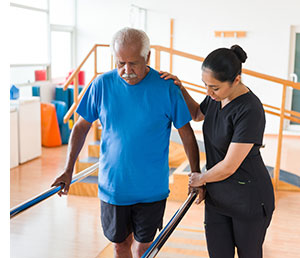 Recovery from a stroke is deeply individual. The type of stroke, severity of brain damage, and timeliness of intervention all affect recovery outcomes. While some patients achieve full recovery, others may experience poorer outcomes or require long-term support.
Recovery from a stroke is deeply individual. The type of stroke, severity of brain damage, and timeliness of intervention all affect recovery outcomes. While some patients achieve full recovery, others may experience poorer outcomes or require long-term support.
Establishing realistic recovery timelines is key. For those dealing with severe aphasia or permanent damage, even small improvements in communication abilities can dramatically enhance quality of life. With continued effort and support, therapy after stroke can improve language skills, restore confidence, and help individuals reconnect with their world.
Appointments
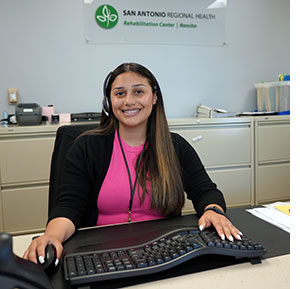 If you or a loved one is experiencing speech difficulties, cognitive linguistic deficits, or aphasia after stroke, don’t wait to seek help. Early intervention through speech therapy can change the trajectory of recovery. At San Antonio Regional Hospital’s Physical Rehabilitation Department, our team of experienced health professionals offers evidence-based speech therapy services in a compassionate, medically supervised hospital setting.
If you or a loved one is experiencing speech difficulties, cognitive linguistic deficits, or aphasia after stroke, don’t wait to seek help. Early intervention through speech therapy can change the trajectory of recovery. At San Antonio Regional Hospital’s Physical Rehabilitation Department, our team of experienced health professionals offers evidence-based speech therapy services in a compassionate, medically supervised hospital setting.
Get Expert Occupational Therapy for Faster Recovery
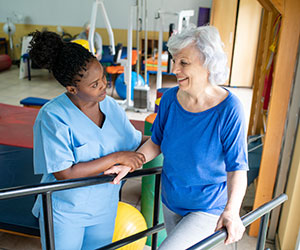
For expert Speech Language Pathology care, consult the specialists at Rancho San Antonio Rehabilitation Center for a personalized treatment plan.
Schedule an Appointment Today:
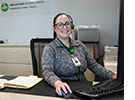 Schedule an Appointment Today:
Schedule an Appointment Today:
For your convenience San Antonio Regional Hospital has three physical therapy locations that are ready to help you. Click here to print a flyer of all three of our locations. Click here to view a map of our locations.
